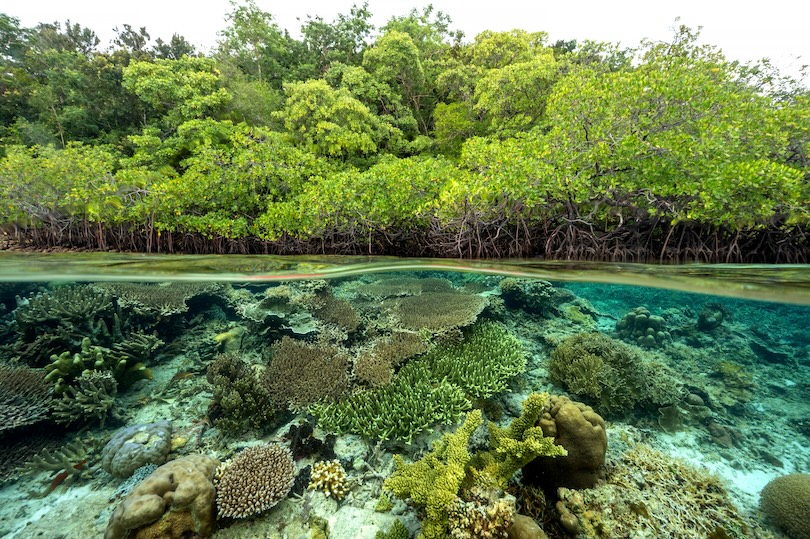Implications of Biodiversity Loss on National and International Security
Implications of Biodiversity Loss on National and International Security E-International Relations



Biodiversity Loss and Its Implications for National and International Security
Biodiversity loss is a rampant and pervasive issue: global wildlife populations have plummeted by 69% in the past 50 years, species are dying off as much as 1,000 times more frequently than before the era of human domination, and it is becoming increasingly accepted that human activities are plunging the world into its sixth mass extinction. Such losses can have incredibly pressing implications for people; perhaps most acutely because they can impair the ability of ecosystems to provide crucial services. These services span the provision of water, food, and materials; the control of pests and diseases; the mediation of disturbances, like droughts and floods; the regulation of the climate; and much more. So how do we frame the issue of biodiversity loss and its devastating impacts?
The Framing of Biodiversity Loss
The issue of biodiversity loss has been framed in various ways. Amongst the more fundamental views are those that pertain to the notion that biodiversity has a certain intrinsic value and hence the right to exist. Amongst the more practical views are those that deem biodiversity loss to be an issue because, as mentioned, it tends to undermine the capacity of ecosystems to perform key functions and thus deliver valued services to people. This latter theme is a notable part of why there are efforts to bolster and spread the perception of biodiversity loss as an important development issue. This latter theme is also a notable part of how biodiversity loss could have pertinent implications for national and international security.
Implications for National and International Security
Biodiversity loss has received limited scrutiny with respect to its implications for national and international security. Some studies have adopted a related, but distinctly different, approach, by examining how biodiversity loss affects human security, like in terms of food security. Another related assemblage of work is that which has been conducted in accordance with the more general concept of environmental security. This concept, broadly, considers how environmental events and trends can affect security, and, hence, in theory, encompasses how biodiversity loss might affect security. Even so, it remains the case that there has been little scrutiny of how biodiversity loss can or could have implications for national or international security.
Factors Suggesting Implications for Security
Several factors, however, suggest that biodiversity loss has the potential to have implications for national and international security. On a fundamental level, a wealth of research emphasises that biodiversity loss can impair ecosystem services in ways that have disastrous implications for people, especially vulnerable people. Such impacts include the devastation of water and food systems, the spread of pests and diseases, and greater impacts from disturbances like droughts and floods, as well as pronounced declines in the capacity of ecosystems to contribute towards climate regulation (e.g., due to a reduced ability to capture and store carbon). Plus, all the more concerningly, biodiversity loss can drive declines in multiple services simultaneously, and it can reduce the capacity of ecosystems to maintain functions and provide services if conditions change, which is an ominous prospect given the current and predicted changes across the planet.
Case Studies: Water Insecurity and Food Insecurity
These impacts of biodiversity loss, and more, could conceivably contribute to or even lead to instability in ways that could have implications for national and international security. One example is water insecurity, whereby it is widely acknowledged that biodiversity loss can cause declines in the quality and quantity of available water. Water scarcity can be a driver of conflict, with specific examples coming from Syria, where water scarcity stimulated disputes over development and wider economic activities that ultimately contributed to the outbreak of the civil war, and Sudan, where water scarcity is thought to have played a part in fuelling the war and genocide in Darfur. Moreover, this relationship between water scarcity and conflict was identified by a study that spanned Africa and Central America, which suggests it has a degree of generality.
Importantly, biodiversity underpins substantial swathes of agriculture across the world, and its loss can lead to acute food insecurity for several reasons, including by leading to precipitous declines in pollination services and to reduced control, and so devastating outbreaks, of pests and diseases. From the other perspective, food insecurity can stir instability. It can fuel violent conflicts, such as in sub-Saharan Africa where higher temperatures and reduced rainfall can increase the likelihood of violent conflict as a result of their impacts on food availability, as well as spur rioting, as shown by the waves of riots in 2007/08 in the aftermath of the global financial crisis and in 2022 following the Russian invasion of Ukraine. Additionally, water and food insecurity can be exacerbated by disturbances; for example, a recent worldwide threat assessment outlined how water and food insecurity, aggravated by droughts and floods, were elevating the risk of conflicts in places that include Egypt, Ethiopia, Iraq, and Jordan. Biodiversity loss can weaken the capacity of ecosystems to buffer against disturbances like droughts and floods, which allows their impacts to be more severe.
Climate Change and Its Link to Biodiversity Loss and Security
Climate change links both biodiversity loss and national and international security. It is widely acknowledged that climate change poses salient risks to national and international security because it promises to cause a myriad of issues that will contribute to instability. It is predicted, for instance, to interfere with water supplies and food systems, causing widespread water and food insecurity in some of the most vulnerable areas of the world; hasten the spread of disease; increase the intensity and frequency of natural disasters, like extreme droughts and floods; and result in ruinous economic impacts. These impacts are expected to threaten national and international security in various ways, such as by exacerbating domestic and international conflicts, driving substantial swathes of migration that contribute to instability, and diverting domestic and international resources away from security programmes.
Biodiversity loss, moreover, can considerably hinder the capacity of ecosystems to contribute towards climate regulation, thereby inciting the more rapid onset of climate change and exacerbating its implications for national and international security. In addition, biodiversity loss can severely reduce the capacity of ecosystems to maintain functions and provide services in the face of changing conditions, which will further accentuate the impacts of climate change, including in terms of its implications for national and international security. This brief cross-disciplinary evaluation reveals that biodiversity loss could have implications for national and international security as it has the potential to cause and aggravate a number of issues central to national and international security.
Challenges in Understanding and Addressing the Implications
If biodiversity loss can have implications for national or international security, then a couple of additional factors mean that these implications are somewhat challenging to understand and address. First, the mechanistic links between biodiversity loss and its many impacts are complex, partly because the links between biodiversity and ecosystem services are themselves so complex and, in many cases, poorly understood. Second,
SDGs, Targets, and Indicators Analysis
1. Which SDGs are addressed or connected to the issues highlighted in the article?
- SDG 2: Zero Hunger
- SDG 6: Clean Water and Sanitation
- SDG 13: Climate Action
- SDG 15: Life on Land
- SDG 16: Peace, Justice, and Strong Institutions
The article discusses the impacts of biodiversity loss on water and food systems, which are connected to SDG 2 (Zero Hunger) and SDG 6 (Clean Water and Sanitation). It also highlights how biodiversity loss can exacerbate climate change, which is relevant to SDG 13 (Climate Action). The article mentions the devastation of ecosystems and the potential for conflicts related to water scarcity, which are connected to SDG 15 (Life on Land) and SDG 16 (Peace, Justice, and Strong Institutions).
2. What specific targets under those SDGs can be identified based on the article’s content?
- SDG 2.4: By 2030, ensure sustainable food production systems and implement resilient agricultural practices that increase productivity and production, that help maintain ecosystems, that strengthen capacity for adaptation to climate change, extreme weather, drought, flooding, and other disasters, and that progressively improve land and soil quality.
- SDG 6.4: By 2030, substantially increase water-use efficiency across all sectors and ensure sustainable withdrawals and supply of freshwater to address water scarcity and substantially reduce the number of people suffering from water scarcity.
- SDG 13.2: Integrate climate change measures into national policies, strategies, and planning.
- SDG 15.1: By 2020, ensure the conservation, restoration, and sustainable use of terrestrial and inland freshwater ecosystems and their services, in particular forests, wetlands, mountains, and drylands, in line with obligations under international agreements.
- SDG 16.1: Significantly reduce all forms of violence and related death rates everywhere.
Based on the article’s content, the targets mentioned above are relevant to address the issues of biodiversity loss and its impacts on water and food systems, climate change, ecosystem conservation, and violence related to water scarcity.
3. Are there any indicators mentioned or implied in the article that can be used to measure progress towards the identified targets?
- Indicator for SDG 2.4: Proportion of agricultural area under productive and sustainable agriculture
- Indicator for SDG 6.4: Water stress index
- Indicator for SDG 13.2: Number of countries with integrated climate change plans
- Indicator for SDG 15.1: Proportion of important sites for terrestrial and freshwater biodiversity that are covered by protected areas
- Indicator for SDG 16.1: Number of intentional homicides per 100,000 population
The article does not explicitly mention indicators, but these indicators can be used to measure progress towards the identified targets based on the issues discussed.
Table: SDGs, Targets, and Indicators
| SDGs | Targets | Indicators |
|---|---|---|
| SDG 2: Zero Hunger | Target 2.4: By 2030, ensure sustainable food production systems and implement resilient agricultural practices | Proportion of agricultural area under productive and sustainable agriculture |
| SDG 6: Clean Water and Sanitation | Target 6.4: By 2030, substantially increase water-use efficiency and ensure sustainable withdrawals | Water stress index |
| SDG 13: Climate Action | Target 13.2: Integrate climate change measures into national policies, strategies, and planning | Number of countries with integrated climate change plans |
| SDG 15: Life on Land | Target 15.1: By 2020, ensure conservation, restoration, and sustainable use of terrestrial and inland freshwater ecosystems | Proportion of important sites for biodiversity covered by protected areas |
| SDG 16: Peace, Justice, and Strong Institutions | Target 16.1: Significantly reduce all forms of violence and related death rates everywhere | Number of intentional homicides per 100,000 population |
Behold! This splendid article springs forth from the wellspring of knowledge, shaped by a wondrous proprietary AI technology that delved into a vast ocean of data, illuminating the path towards the Sustainable Development Goals. Remember that all rights are reserved by SDG Investors LLC, empowering us to champion progress together.
Source: e-ir.info

Join us, as fellow seekers of change, on a transformative journey at https://sdgtalks.ai/welcome, where you can become a member and actively contribute to shaping a brighter future.







